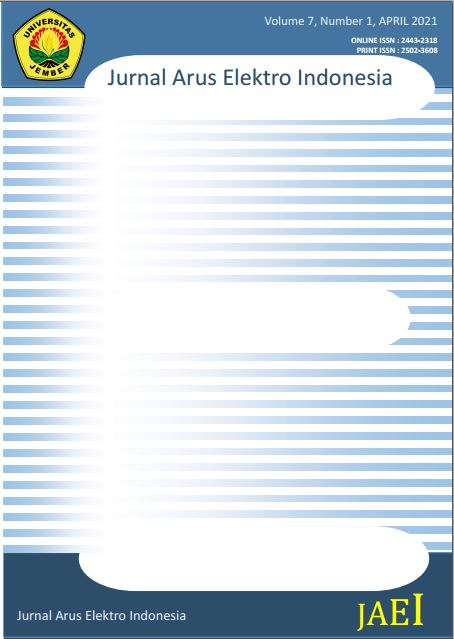PROTOTYPE ALAT FERMENTOR STATER MODIFIED CASSAVA FLOUR MENGGUNAKAN METODE FUZZY MAMDANI
DOI:
https://doi.org/10.19184/jaei.v7i1.24321Abstract
Stater MOCAF is a seed fermented during the manufacture of biologically modified MOCAF. The manufacture of MOCAF stater tools can help MOCAF flour entrepreneurs to use automated tools in producing staters. The design used the Arduino Mega2560 as a microcontroller to control the fermentation tank system. Temperature parameters in the heater are used to stabilize the temperature with a set point of 370C. As for the set point pH 5.5. Use citric acid for acidic liquids, and use water pH 8+ for alkaline solutions. The bacteria used to make mocaf staters is lactobacillus plantarum.
The first test was to test the PWM PG45 motor, which is used to drive a mixer in the form of a duty cycle. Sensor testing includes DS18B20 waterproof temperature sensor testing and pH sensor testing. In addition, the Fuzzy Mamdani method is used to test the tool as a whole. This fuzzy control is used to control the temperature and pH value of the MOCAF fermentor. If the temperature and pH values do not match the required parameters, then there are temperature actuators and pH actuators to stabilize the parameters. Fermentation is carried out for 24 hours, and the temperature and pH value are controlled to remain stable at 370C and the pH range of 4-6. After about 4 hours of measurement, the new temperature drops. However, after 10 minutes, the temperature stabilizes at 370C. As for the pH value, because the pH sensor reading response is about 2 minutes then the value will change.
Downloads
Additional Files
Published
Issue
Section
License
Sebagai penulis yang sesuai naskah dan atau atas nama semua penulis, saya menjamin bahwa :
- Naskah yang diajukan adalah karya asli saya/kami sendiri.
- Naskah belum dipublikasikan dan tidak sedang diajukan atau dipertimbangkan untuk diterbitkan di tempat lain.
- Teks, ilustrasi, dan bahan lain yang termasuk dalam naskah tidak melanggar hak cipta yang ada atau hak-hak lainnya dari siapa pun.
- Sebagai penulis yang sesuai, saya juga menjamin bahwa "JAEI Editor Journal" tidak akan bertanggung jawab terhadap semua klaim hak cipta dari pihak ketiga atau tuntutan hukum yang dapat diajukan di masa depan, dan bahwa saya akan menjadi satu-satunya orang yang akan bertanggung jawab dalam kasus tersebut.
- Saya juga menjamin bahwa artikel tersebut tidak mengandung pernyataan memfitnah atau melanggar hukum.
- Saya/kami tidak menggunakan metode yang melanggar hukum atau materi selama penelitian.
- Saya/kami memperoleh semua izin hukum yang berkaitan dengan penelitian,
- Saya/kami berpegang pada prinsip-prinsip etika selama penelitian.
- Saya/kami bersedia apabila artikel kami dipublikasikan oleh tim redaksi JAEI



